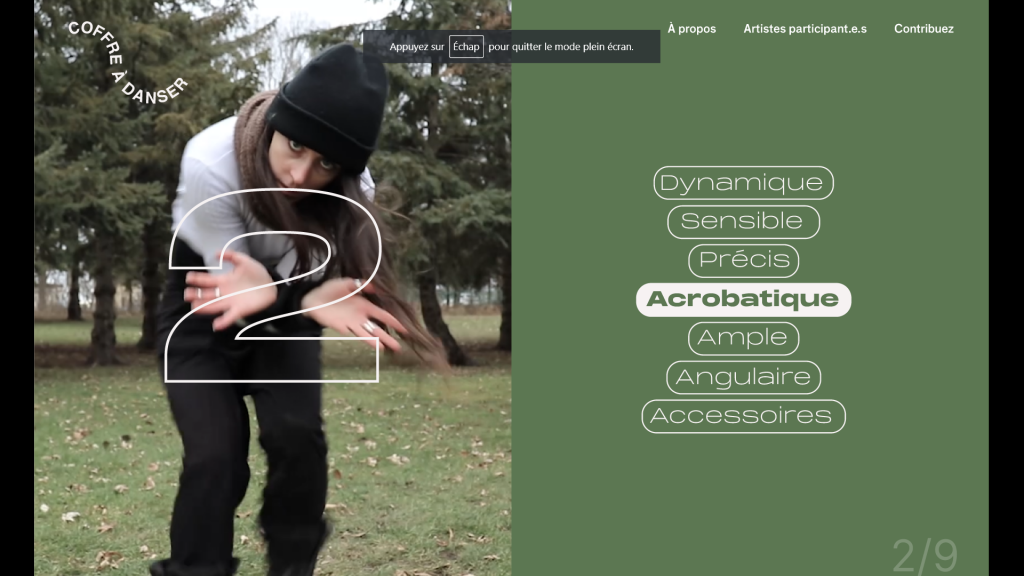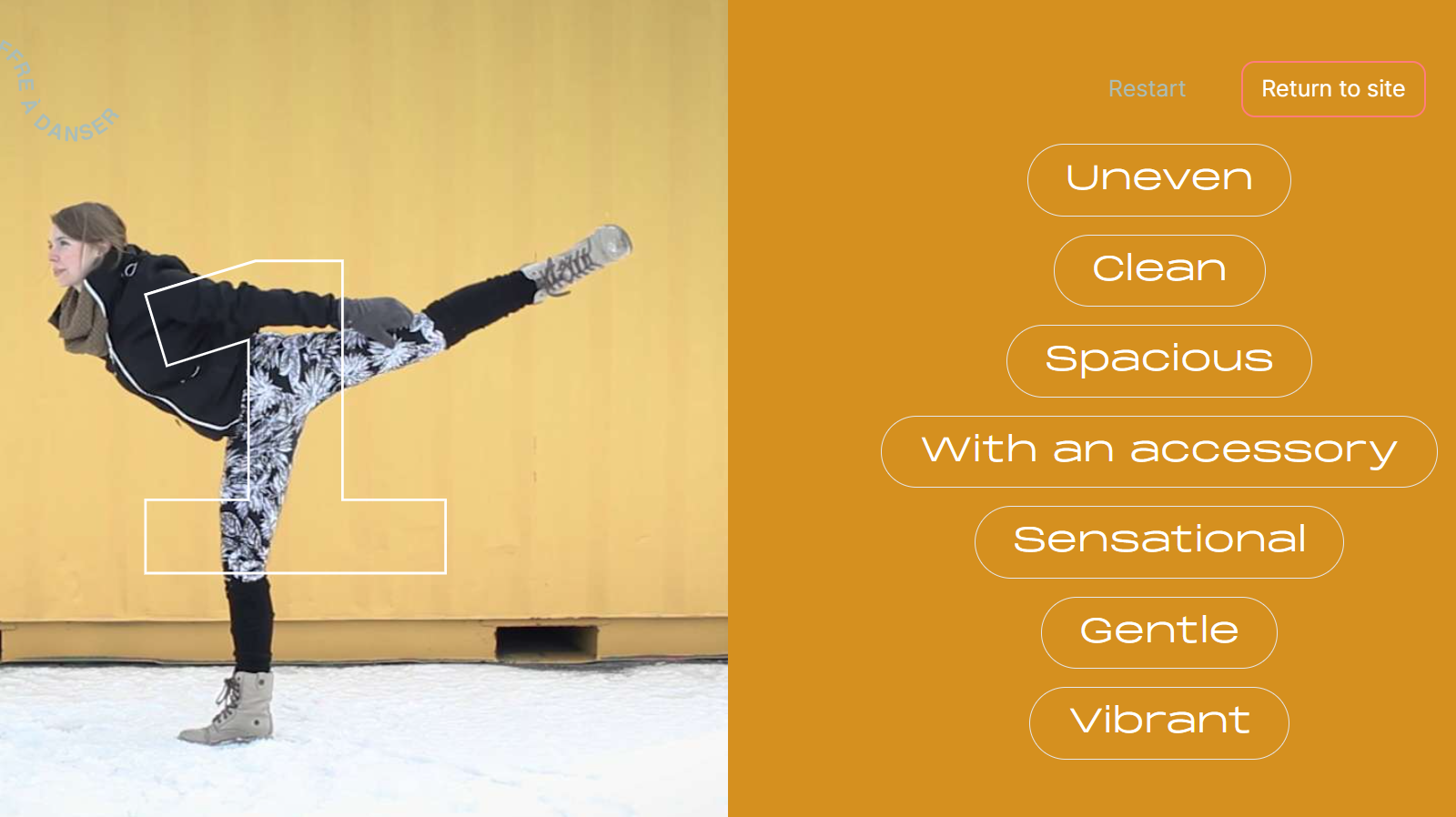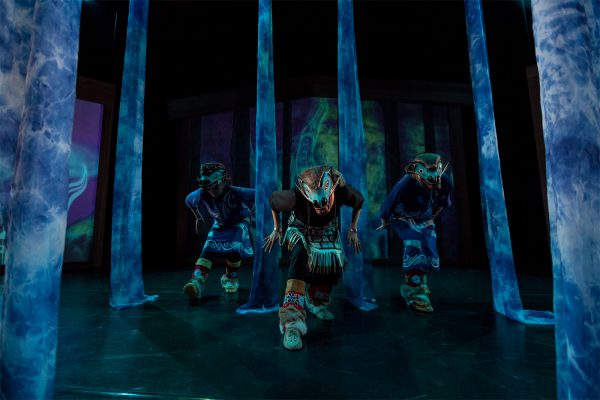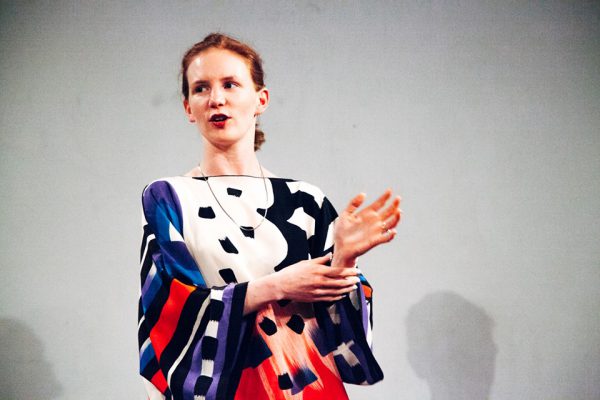This article is published through our Regional Reporter Program. We acknowledge the support of the Canada Council for the Arts through the Digital Now initiative.
***
Since the launch of the Coffre à danser last month, audiences and artists can create their own choreographies online. The ambitious interactive platform is a virtual dance chest of sorts, as the title suggests, and houses the building blocks for more than 20 billion possible combinations.
Users are invited to make their own creative choices by selecting movement qualities described as dynamic, precise, sensitive or virtuosic, among others, through custom-built software that assembles dance sequences filmed with 12 dancer-collaborators. Vincent-Nicolas Provencher, Joliette-based dancer and choreographer, designed the project and collaborated with four Quebec-based composers to create original music.
The platform is unique for the collaborative connection it creates between the artists and the public at a time when access to dance has been severely limited by the conditions of the pandemic. With this project, visitors not only have access to online performance but also play a central role in the creative process itself.
“I thought it would be fun to have software or something that was really customizable,” said Provencher. “I was aiming to reach audiences that wanted to go see dance in the theatre, but also anyone who might want to explore the inner workings of dance choreography itself.”
The project was inspired by children’s books that combine the body parts of different animals to create fantastical characters, as well as choreographer Mitchell Rose’s Exquisite Corps, in which dance artists create a sequence that picks up from the last movement of the person before them.
Each sequence was filmed between November 2020 and February 2021. To create the videos, dancers were given a start and end position as well as a metronome to record a set number of bars at different speeds to be able to align sequences with the different musical compositions. With this meticulous planning, each dancer was then encouraged to search for a site outside of a dance studio, choose a spot that inspired them and move in their own style.
“It was also about finding the richness of movement of each person. I wanted it to be able to burst open the forms and styles,” said Provencher. His collaborators have backgrounds in circus, contemporary dance, ballet and hip hop.
The team of dancers includes Camille Trudel-Vigeant, Charles-Alexis Desgagnés, Jimmy Gonzalez Palacios, Kim Henry, Laura Lelièvre, Marie-Michelle Darveau, Marilyne Cyr, Mélanie Dupuis, Philippe Dupuis, Priscilla Dellazizzo, Roxane Duchesne-Roy and Stéphanie Poulin McComeau.

The platform is both for artists and the public. “The less than one-minute-long choreographies allow me to make and remake my choices,” said Robert St-Amour, a dance enthusiast from Montreal, of his experience on the platform. “I was also curious to find some of the dancers I know.”
Coffre à danser is a pilot project that Provencher intends to render more complex and precise. He hopes future iterations can be used as a teaching tool in university dance and choreography programs such as those at Concordia University or Université du Québec à Montréal. He also hopes to adapt the software and the concept for a physical structure in the form of a dome that the public can enter during a festival-type event to create dances with customizable decor and music.
“The idea is for the public to be able to inscribe their memories into the work that is larger than just their own experience,” said Provencher. “Into the lineage of participants who passed before and after them.”
Tagged:






